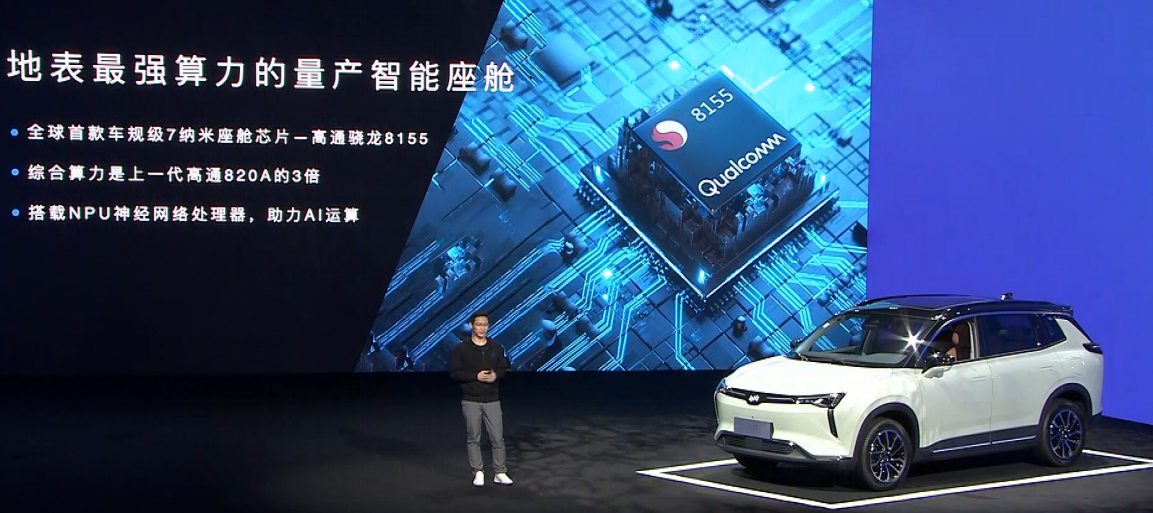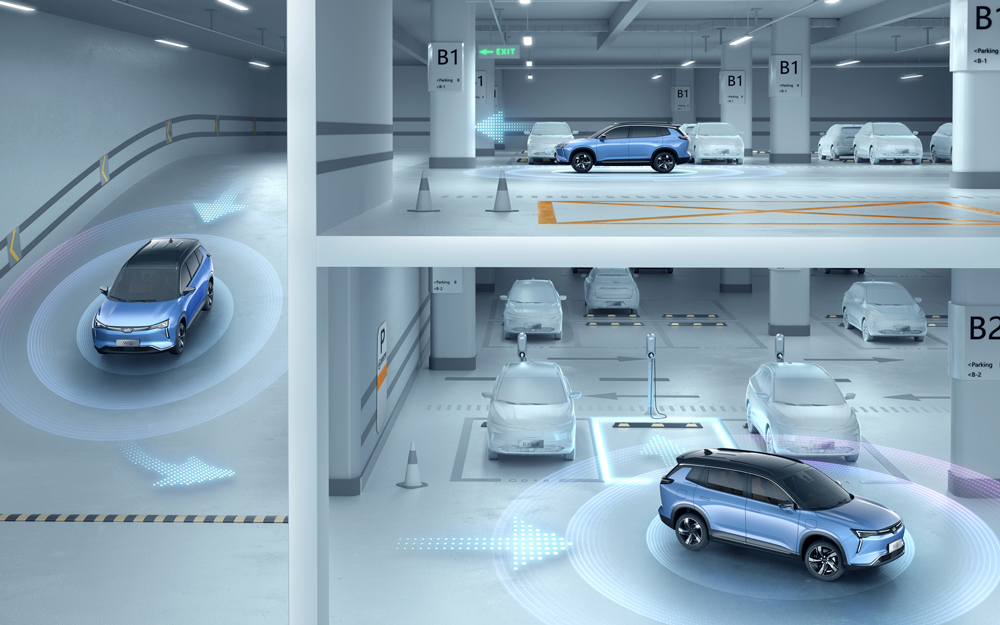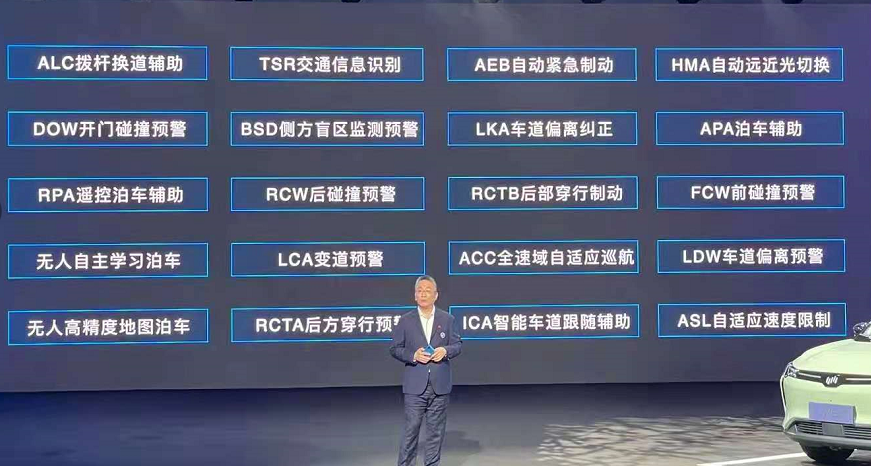By: Wang Lingfang
Weima has delivered the first L4 level autonomous vehicles with specific scenarios in the domestic market – the W6, mainly featured with autonomous parking.
On April 16th, Weima hosted the “Weima Daydream 2021”. Shen Hui, founder, chairman and CEO of Weima Motors, emphasized that the W6 is a mass-produced model that can be delivered this month, not a futures contract.
This was a five and a half hour-long press conference, which was broadcasted live on CCTV, interpreting the W6 in all aspects.
Shen Hui also revealed that the engineers had started a very serious and important project of L5 limited-scene autonomous driving, “we will achieve L5 level autonomous driving in certain scenarios in 2022”.
There are five models of Weima W6, with prices ranging from 169,800 yuan to 2.598 million yuan, and a range of 520-620 kilometers.
Overall, the W6 has two main features: first, it has 5G super computing power, and an evolving digital intelligent cabin; second, it is equipped with AVP autonomous parking system, the world’s first L4 level autonomous driving function.
What is more practical is that the W6 has upgraded its L2 level assisted driving function, achieving functions such as TJP (traffic jam pilot) and NLP (navigation and lane keeping pilot) functions.
The reliability and stability of these functions remain to be seen.
Or the strongest computing power mass-produced intelligent cabin
Torres, the architect of Weima’s intelligent cabin, gave a detailed explanation of Weima W6’s intelligent cabin.
Torres said that Weima’s intelligent digital cabin uses Qualcomm’s third-generation smart cabin SA8155 chip. The new platform CPU and GPU have three times the computing power of the previous generation 820A, and introduce the “neural network” processor NPU, which has AI artificial intelligence and deep learning capabilities. In addition, the intelligent digital video input is five more than the previous generation platform, which provides a clear and smooth interactive experience and is comparable to first-line high-end smartphones.

The intelligent cabin is equipped with UFS memory card, and the read speed has been improved from the original 260 M per second to 730 M per second.”In other words, when you sit in the driver seat of the W6, within 0.6 seconds the camera can recognize your face and adjust everything to your preferred settings. All of your account information is synced to your account. The recognition process takes 1.16 seconds on iPhone X, almost twice as slow as W6. Then, when you speak, the vehicle can respond to your needs within 0.5 seconds,” explained Torres.
To verify the system, Torres himself tested it out and the W6 successfully executed five commands within three seconds.
L4 Level AVP Autonomous Parking System
The WM W6 is equipped with the AVP unmanned autonomous parking system, including HAVP (self-learning parking) for fixed parking spaces such as residences and offices. After learning once, the vehicle can autonomously locate a parking spot. Users can simply use the WM Zhixing APP to “call and go”.

PAVP (high-precision map parking) is suitable for large-scale shopping malls, office buildings and other non-fixed parking spaces. Relying on high-precision maps, the vehicle can automatically plan parking routes, and cruise autonomously to park and retrieve.
WM stated that PAVP functionality will be pushed to users through OTA upgrades later this year.
The WM W6 has also undergone a comprehensive upgrade for the full-featured L2-level intelligent driving assistance system specifically for Chinese road conditions, including the new Living Pilot 3.0 intelligent driving assistance system, offering 20 driving assistance configurations. Added practical functions include stalk lane change (ALC), traffic congestion guidance (TJP), automatic navigation assistance driving (NLP), forward crossing warning (FCTA), rear crossing warning (RCTA), rear-crossing braking (RCTB), door collision warning (DOW), and remote parking assistance (RPA) allowing vehicles to become safe and liberating travel spaces.
 Strong hardware support is essential for both specific scenarios of autonomous driving systems and practical advanced driver assistance systems. The WM W6 is equipped with a systematic electronic mechanical component to ensure accurate execution of decision-making actions in one go: the new generation of steering motors can quickly respond to the steering wheel’s rotation, enabling the vehicle to accurately travel on the recorded route; the high-efficiency integrated motor brings stronger power output with a conversion efficiency of up to 95%; i-booster+ Bosch 9.3 ESP has a fast millisecond-level control response to achieve a braking effect of immediate stop.
Strong hardware support is essential for both specific scenarios of autonomous driving systems and practical advanced driver assistance systems. The WM W6 is equipped with a systematic electronic mechanical component to ensure accurate execution of decision-making actions in one go: the new generation of steering motors can quickly respond to the steering wheel’s rotation, enabling the vehicle to accurately travel on the recorded route; the high-efficiency integrated motor brings stronger power output with a conversion efficiency of up to 95%; i-booster+ Bosch 9.3 ESP has a fast millisecond-level control response to achieve a braking effect of immediate stop.
In terms of sensors, 5 77GHz millimeter-wave radars, 2 high-definition front cameras, 4 high-definition panoramic cameras, and 12 ultrasonic radars efficiently collaborate to ensure the smooth operation of various driving aids.
Digitized Electronic Electrical Architecture
To achieve these functionalities, WM requires an advanced underlying architecture, namely a digitized electronic electrical architecture.
According to Torres, WM adopts SOA digital electrical architecture and OS operating systems while having whole-vehicle OTA capability to support both the Living Pilot intelligent driving assistant system and the LivingMate full-car interaction system, enabling user customization. Here, users include not just owners but also car enthusiasts and developers of in-car applications.
Torres explains that Living Pilot and Living Mate are like the left and right brains of a human. It can call on WM OS to provide standardized services, whereby the OS, through the service-oriented communication layer, calls on all the vehicle capabilities, including power, body, thermal management, and chassis.
For instance, Torres cites the example of the car’s live broadcasting function designed on an SOA architecture framework, using the built-in driving recorder. The OS calls on the image recording service and then transmits the images externally. “Without adding any hardware, we were able to quickly launch a popular in-car live broadcast feature.”
Torres says there are many other distinctive functions, 25 of which the WM W6 has opened up in stages, covering over 200 functions and over 600 features of the whole vehicle.
Since WM uses an SOA architecture, in most cases, WM only needs to upgrade the applications on top of the OS, achieving the whole-vehicle OTA, greatly reducing the coupling degree while increasing the upgrade speed.
Torres emphasizes that the WM W6 has a dedicated backup area, allowing the software package to enter the backup area. Once the new firmware is downloaded intact, the function brushing begins, reducing the probability of OTA failure to 1/100,000 (one hundred thousandths) without requiring a dedicated parking for download. Some software switching can be done in as little as 1 second.Car Ethernet transmission allows for fast firmware download, and through domain control policy, the fastest upgrade takes only 5 minutes, even for autonomous parking modules around 900 MB such as AVP. It only takes about 10 minutes.
Insist on taking two steps forward with automatic driving
Shen Hui emphasized the L2 and L4 level automatic driving because of the automatic driving strategy he developed for WM.
Shen Hui said that WM’s automatic driving strategy is to take two steps forward.
First of all, they will do a solid job on L2. Shen Hui emphasized that the functions of L2 must be powerful, technically stable and the interaction must be convenient in order to give users confidence in the L4 and L5 products.
In terms of interaction, Shen Hui believes that WM has taken a big step forward compared to Tesla, and “using voice control is the most perfect method for entering or exiting any L2, whichever type it is, while the driver still has to focus on driving.”
Secondly, WM’s L4 is also being launched, “L4 level is a limited scenario, and then the scenes will be continuously increased.”
Shen Hui said that these two roads are WM’s unmanned driving strategy, especially with the goal of creating mass-produced products and delivering them to users to enjoy the convenience brought by unmanned driving, rather than just demonstrating modified concept cars, etc.
Full-stack R&D does not equal full industry chain R&D
Shen Hui believes that it is very difficult for car companies to achieve full industry chain R&D.
In Shen Hui’s opinion, the automobile is an old industry that has been a century in the making, although intelligent electric vehicles have broken away from the constraints of traditional engine and gearbox configurations. There are still many companies that have accumulated technological products that are very relevant to intelligent electric vehicles throughout the entire value chain. Therefore, it is idealistic to be so eager to achieve complete industry chain R&D.
“For example, a very simple control needs a lot of data and needs to undergo several tens of millions of tests before it can be achieved. Especially when it comes to machine control, it is often more difficult than human control,” Shen Hui said.
Therefore, Shen Hui believes that all new forces will not be able to accumulate enough knowledge and experience within such a short period of time, let alone cutting-edge chips, perception algorithms, and so on. “Therefore, WM’s strategy is simple, to cooperate with ecological partners, and to ensure the safety and reliability of L4 and L5 products in unmanned driving, with stable quality, excellent user experience, and reasonable cost, so that they can be mass-produced and delivered.”
Shen Hui stated that now Chinese partners have stood up, whether it is the software and hardware of engines, batteries, electronic control, intelligent cabins or the software/hardware of unmanned driving, perception algorithms, etc. “We do not need to exchange technology through joint ventures. There are many domestic brands that have the core technology and are eager to cooperate.”
In addition, Shen Hui revealed that WM will launch two new products in the second half of 2021 when they execute their sedan strategy.2021 is a year of comprehensive acceleration of WM Motor’s strategy. Shen Hui said, “WM will use a more diverse product line to serve a wider mainstream user base and make them enjoy and afford.”
This article is a translation by ChatGPT of a Chinese report from 42HOW. If you have any questions about it, please email bd@42how.com.